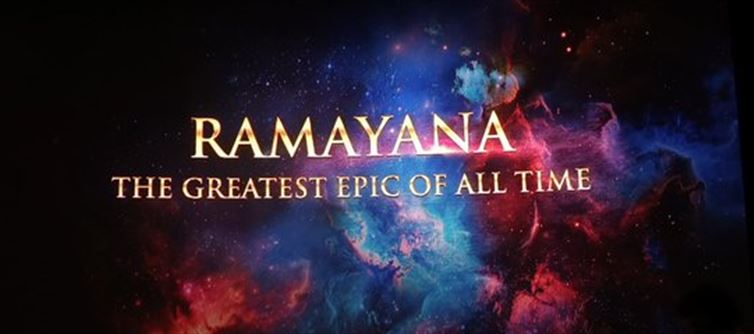
A teaser titled “Ramayana – First Glimpse” is currently setting social media ablaze—and for good reason. Imagining bollywood heartthrob ranbir kapoor as Lord Rama and the ethereal sai pallavi as Goddess Sita, this unofficial trailer taps into India’s timeless mythology with stunning visual ambition and cinematic reverence.
Though clearly labeled as a concept teaser, this 2-minute fan edit is more than mere fantasy. It is a passionate cinematic love letter to a yet-to-be-made epic, merging familiar mythos with modern filmmaking spectacle. The teaser is edited in the style of a big-budget film announcement, complete with sweeping drone shots, glowing embers, divine arrows in mid-flight, and a thunderous orchestral score that dares to echo Hollywood’s grandeur.
Ranbir Kapoor—often associated with emotionally complex roles—appears digitally transformed into a stoic warrior prince. His gaze carries the weight of dharma, loss, and sacred duty. In parallel, Sai Pallavi exudes quiet strength and grace as Sita, her expressions capturing both divine gentleness and inner resilience. Even in this unofficial montage, their presence feels authentic and immersive, leaving viewers wondering: Could this be more than just a fan's dream?
The teaser pulls no punches in referencing major story arcs—from forest exile to divine combat—while remaining respectful of its source. It neither modernizes nor mocks; it honours. This is not a parody. It is a pointed wish—a vision of what indian cinema could achieve if mythological storytelling is handled with the right mix of reverence, technology, and taste.
What makes this teaser so impactful isn’t its budget (clearly limited), but its imagination. It reflects a growing hunger among indian audiences for high-concept, high-production-value adaptations of epics like the Ramayana, something between Sanjay Leela Bhansali’s aesthetic ambition and the global appeal of Dune or Lord of the Rings.
The choice of actors is inspired. Ranbir’s spiritual aura and Sai Pallavi’s natural, grounded presence offer a break from overly commercial pairings. The fantasy becomes more believable because the casting feels earned, not formulaic.
But let us be clear: this is not an official film teaser. There’s no production banner, no studio, no confirmation. Still, it is effective. It has done what even some official trailers fail to do—it has made us hope.
As a critic, I find this fan-made piece not only a testament to audience creativity but also a subtle challenge to the industry: Why hasn’t a Ramayana like this been made yet? And more importantly, if it were, would it be this respectful and visually stirring?
In the current age of content saturation, where mythological adaptations often veer into garish overkill or simplistic storytelling, this concept teaser stands out for its earnest vision. It suggests that if indian cinema is ever to reach the epic grandeur of its myths, it must match such fan passion with professional courage.




 click and follow Indiaherald WhatsApp channel
click and follow Indiaherald WhatsApp channel